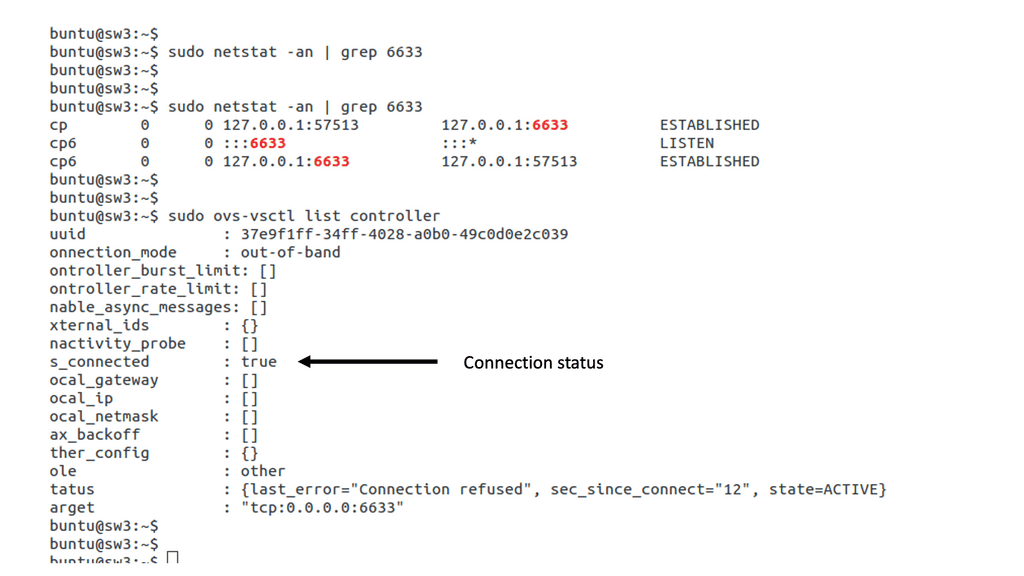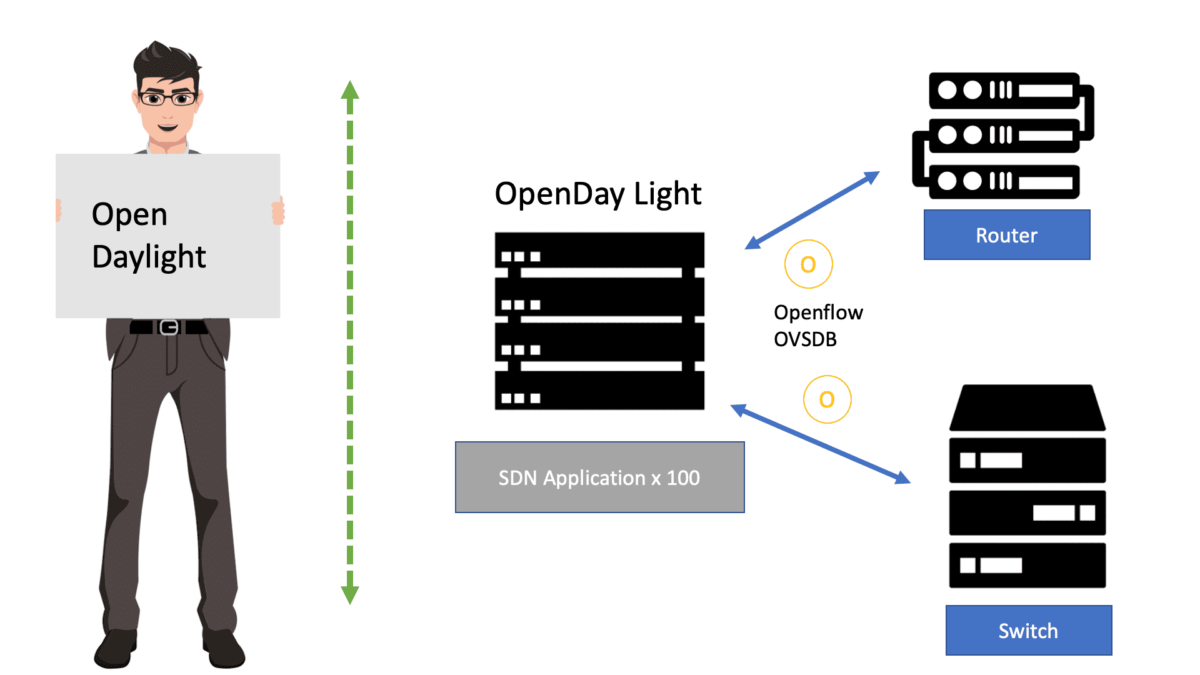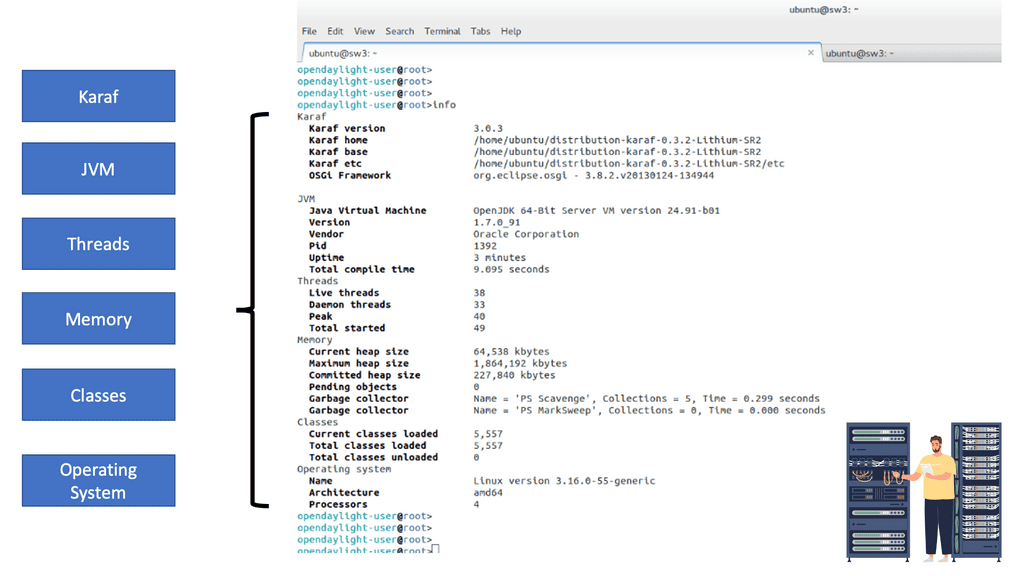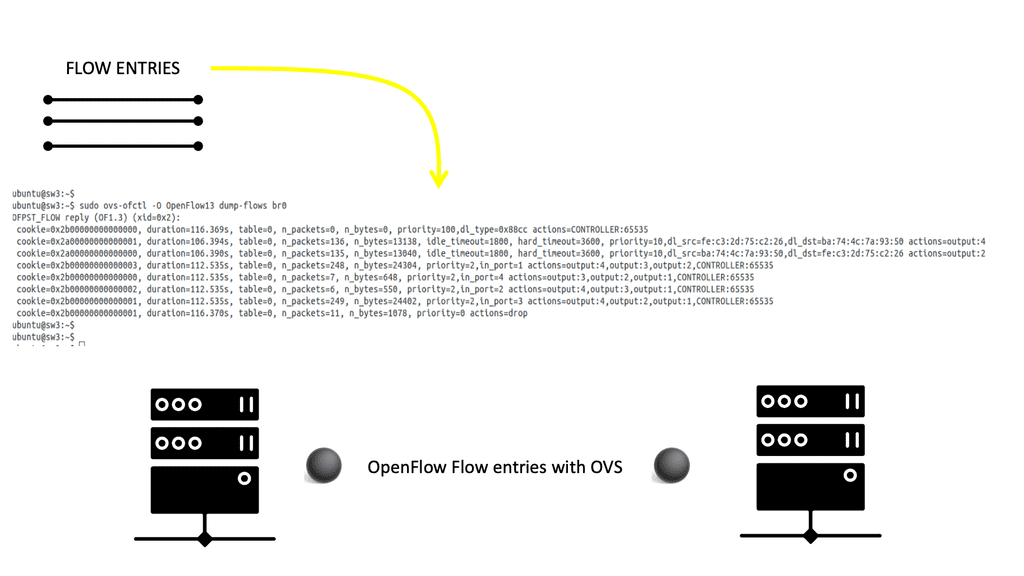OpenDaylight
Opendaylight, an open-source software-defined networking (SDN) controller, has revolutionized the way network infrastructure is managed. In this blog post, we will delve into the capabilities of Opendaylight and explore how it empowers organizations to optimize their network operations and unlock new possibilities.
Opendaylight, often abbreviated as ODL, is a robust and scalable SDN controller built by a vibrant community of developers. It provides a flexible platform for network management and control, enabling administrators to programmatically configure and monitor their network infrastructure. With its modular architecture and extensive set of APIs, Opendaylight offers unparalleled versatility and extensibility.
One of the standout features of Opendaylight is its comprehensive support for various southbound and northbound protocols. From OpenFlow to NETCONF and RESTCONF, Opendaylight seamlessly integrates with diverse network devices and applications, making it an ideal choice for heterogeneous environments. Additionally, its rich set of network services, such as topology discovery, traffic engineering, and load balancing, empower network administrators to optimize performance and enhance security.
Opendaylight's true power lies in its ability to be extended and customized through applications and plugins. Developers can leverage the Opendaylight platform to build innovative network management applications tailored to their organization's specific needs. Whether it's implementing advanced analytics, orchestrating complex network services, or integrating with other management systems, Opendaylight provides a solid foundation for creating cutting-edge solutions.
The strength of Opendaylight lies not only in its technology but also in its active and diverse community. With contributors ranging from industry giants to individual enthusiasts, the Opendaylight community fosters collaboration, knowledge sharing, and continuous improvement. The ecosystem surrounding Opendaylight comprises a wide array of plugins, tools, and frameworks that further enhance its capabilities and make it a vibrant and thriving platform.
Conclusion: Opendaylight has emerged as a game-changer in the field of network management, offering a flexible and powerful solution for organizations of all sizes. Its extensive features, extensibility, and vibrant community make it an ideal choice for empowering network administrators to take control of their infrastructure. By embracing Opendaylight, organizations can unlock new possibilities, enhance operational efficiency, and pave the way for future innovations in network management.
Matt Conran
Highlights: OpenDaylight
Open-source SDN
OpenDaylight, or ODL, is one of the most popular open-source SDN controllers. Controllers like ODL are platforms, not products. As a result of the applications on top of the controller platform, this platform can provide specialized applications, including network virtualization, network monitoring, visibility, tap aggregation, and many other functions. Controllers can offer so much more than fabrics, network virtualization, and SD-WAN because of this.
In addition to ODL, there are other open-source controllers. The Open Network Foundation offers ONOS, and ETSI offers TeraFlow. Each solution has a different focus and feature set depending on the use case.
The Role of Abstraction
What is the purpose of the service abstraction layer in the OpenDaylight SDN controller? Traditional networking involves physical boxes that are physically connected. Each device has a data and control plane function. The data plane is elementary and forwards packets as quickly as possible. The control plane acts as the point of intelligence and sets the controls necessary for data plane functionality.
SDN Controller
With the OpenDaylight SDN controller, we drag the control plane out of the box and centralize it on a standard x86 server. What happens in the data plane does not change; we still forward packets. It still consists of tables that look at packets and perform some action. What changes are the mechanisms for how and where tables get populated? All of which share similarities with the OpenStack SDN controller.
OpenDaylight
OpenDaylight is the central control panel that helps populate these tables and move data through the network as you see fit. It consists of an open API that allows the control of network objects as applications. So, to start the core answers, what is the purpose of the service abstraction layer in the OpenDaylight SDN controller? Let’s look at the OpenDaylight and OpenStack SDN controller integrations.
OpenDaylight SDN Controller. Key OpenDaylight Discussion points: |
|
For additional pre-information, you may find the following helpful:
A key point: Ansible and OpenDaylight
The Ansible architecture is simple, flexible, and powerful, with a vast community behind it. Ansible is capable of automating systems, storage, and of course, networking. However, Ansible is stateless, and a stateful view of the network topology is needed from the network engineer’s standpoint. This is where OpenDaylight joins the game.
As an open-source SDN controller and network platform, OpenDaylight translates business APIs into resource APIs, and Ansible networking performs its magic in the network. The Ansible architecture, specifically the Ansible Galaxy tool that ships with Ansible, can be used to install OpenDaylight. To install OpenDaylight on your system, you can use an Ansible playbook.
Back To Basics With OpenDaylight
OpenDaylight Integration: OpenStack SDN Controller
The single API is used to configure heterogeneous hardware. OpenDaylight integrates tightly with the OpenStack SDN controller, providing the central controller element for many open-source clouds. It was born shortly after Neutron, and the two projects married as soon as the ML2 plugin was available in Neutron. OpenDaylight is not intended to replace the Neutron Networks but adds and provides better functionality and network management. OpenDaylight Beryllium offers a Base, Virtualized, and Service Provider edition.
OpenDaylight (ODL) understands the network at a high level, running multiple applications on top of managing network objects. It consists of a Northbound interface, Middle tier, and Southbound interface. The northbound interface offers the network’s abstraction. It exposes interfaces to those writing applications to the controller, and it’s here that you make requests with high-level instructions.
The middle tier interprets and compiles the request, enabling the southbound interface to action the network. The type of southbound protocol is irrelevant to the northbound API. It’s wholly abstracted and could be OpenFlow, OVSDB, or BGP-LS. The following screen displays generic information for the OpenDaylight Lithium release.
Key Features and Capabilities:
1. OpenDaylight Controller: At the core of OpenDaylight is its controller, which acts as the brain of the network. The controller provides a centralized network view, enabling administrators to manage resources, define network policies, and dynamically adapt to changing network conditions.
2. Northbound and Southbound Interfaces: OpenDaylight offers northbound and southbound interfaces that facilitate communication between the controller and network devices. The northbound interface enables applications and services to interact with the controller, while the southbound interface allows the controller to communicate with network devices, such as switches and routers.
3. Modular Architecture: OpenDaylight’s modular architecture provides flexibility and extensibility. It allows developers to add or remove modules based on specific network requirements, ensuring the platform remains lightweight and adaptable to various network environments.
4. Comprehensive Set of Protocols: OpenDaylight supports various industry-standard protocols, including OpenFlow, NETCONF, and BGP. This compatibility ensures seamless integration with existing network infrastructure, making adopting OpenDaylight in diverse network environments easier.
Benefits of OpenDaylight:
1. Network Automation: OpenDaylight simplifies network management by automating repetitive tasks like provisioning and configuration. This automation significantly reduces the time and effort required to manage complex networks, allowing network engineers to focus on more strategic initiatives.
2. Enhanced Network Visibility: With its centralized control and management capabilities, OpenDaylight provides real-time visibility into network performance and traffic patterns. This visibility allows administrators to promptly identify and troubleshoot network issues, improving reliability and performance.
3. Scalability and Flexibility: OpenDaylight’s modular architecture and support for industry-standard protocols enable seamless scalability and flexibility. Network administrators can quickly scale their networks to accommodate growing demands and integrate new technologies without disrupting existing infrastructure.
4. Innovation and Collaboration: Being an open-source platform, OpenDaylight encourages collaboration and innovation within the networking community. Developers can contribute to the project, share ideas, and leverage their collective expertise to build cutting-edge solutions that address evolving network challenges.
Complications with Neutron Network
Initially, OpenStack networking was built into Nova ( nova-network ) and offered little network flexibility. It was rigid and significant if you only wanted a flat Layer 2 network. Flat networks are fine for small designs with single application environments, but anything at scale will reach CAM table limits. VLANs also have theoretical hard stops.
Nova networking was represented as a second-class citizen in the compute stack. Even OpenStack Neutron Security Groups were dragged to another device and not implemented at a hypervisor level. This was later resolved by putting IPtables in the hypervisor, but we still needed to be on the same layer 2 domain.
Limitation of Nova networking
Nova networking represented limited network functionality and did not allow tenants to have advanced control over network topologies. There was no load balancing, firewalling, or support for multi-tenancy with VXLAN. These were some pretty big blocking points.
Suppose you had application-specific requirements, such as a vendor-specific firewall or load balancer, and you wanted OpenStack to be the cloud management platform. In that case, you couldn’t do this with Nova. OpenStack Neutron solves all these challenges with its decoupled Layer 3 model.
A key point: Networking with Neutron
Networking with Neutron offers better network functionality. It provides an API allowing the interaction of network constructs ( router, ports, and networks ), enabling advanced network functionality with features such as DVR, VLXAN, Lbass, and FWass.
It is pluggable, enabling integration with proprietary and open-source vendors. Neutron offers more power and choices for OpenStack networking, but it’s just a tenant-facing cloud API. It does not provide a complete network management experience or SDN controller capability.
The Neutron networking model
The Neutron networking model consists of several agents and databases. The neutron server receives API calls and sends the message to the Message Queue to reach one of the agents. Agents on each compute node are local, actioning, and managing the flow table. They are the ones that carry out the orders.
The Neutron server receives a response from the agents and records the new network state in the database. Everything connects to the integration bridge ( br-int ), where traffic is tagged with VLAN ID and handed off to the other bridges, such as br-tun, for tunneling traffic.
Each network/router uses a Linux namespace for isolation and overlapping IP addresses. The complex architecture comprises many agents on all compute, network, and controller nodes. It has scaling and robustness issues you will only notice when your system goes down.
Neutron is not an API for managing your network. If something is not working, you need to check many components individually. There is no specific way to look at the network in its entirety. This would be the job of an OpenDaylight SDN controller or an OpenStack SDN controller.
OpenDaylight Project Components
OpenDaylight is used in conjunction with Neutron. It represents the controller that sits on top and offers abstraction to the user. It bridges the gap between the user’s instructions and the actions on the compute nodes, providing the layer that handles all the complexities. The Neutron doesn’t go away and works together with the controller.
Neutron gets an ODL driver installed that communicates with a Northbound interface that sits on the controller. The MD-SAL (inventory YANG model) in the controller acts as the heart and communicates to both the controller OpenFlow and OVSDB components.
OpenFlow and OVSDB are the southbound protocols that configure and program local compute nodes. The OpenDaylight OVSDB project is the network virtualization project for OpenStack. The following displays OpenvSwtich connection to OpenDaylight. Notice the connection status is “true.” For this setup, the controller and switch are on the same node.

The role of OpenvSwitch
OpenvSwitch is viewed as the workhorse forOpenDaylight. It is programmable and offers advanced features such as NetFlow, sFlow, IPFIX, and mirroring. It has extensive flow matching capabilities – Layer 1 ( QoS priority, Tunnel ID), Layer 2 ( MAC, VLAN ID, Ethernet type), Layer 3 (IPv4/v6 fields, ARP), Layer 4 ( TCP/UDP, ICMP, ND) with many chains of action such as output to port, discard and packet modification. The two main userspace components are the ovsdb-server and the ovs-vswitchd.
The ODL OVSDB manager interacts with the ovsdb-server, and the ODL OpenFlow controller interacts with the ovs-vswitchd process. The OVSDB southbound plugin plugs into the ovsdb-server. All the configuration of OpenvSwitch is done with OVSDB, and all the flow adding/removing is done with OpenFlow.
OpenDaylight OpenFlow forwarding
OpenStack traditional Layer 2 and Layer 3 agents use Linux namespaces. The entire separation functionality is based on namespaces. OpenDaylight doesn’t use namespaces; you only have a namespace for the DHCP agent. It also does not have a router or operate with a network stack—the following displays flow entries for br0. OpenFlow ver1.3 is in use.
OpenFlow rules are implemented to do the same job as a router. For example, MAC is changing or TTL decrementation. ODL can be used to manipulate packets, and the Service Function Chain (SFC) feature is available for advanced forwarding. Then, you can use service function chaining with service classifier and service path for path manipulation.
OpenDaylight service chaining has several components. The job of the Service Function Forwarder (SFF) is to get the flow to the service appliance; this can be accomplished with a Network Service Header (NSH) or using some tunnel with GRE or VXLAN.
OpenDaylight has emerged as a powerful platform for network automation and SDN, empowering organizations to unlock their networks’ full potential. Its robust features, modular architecture, and support for industry-standard protocols make it a valuable asset for network administrators and developers. By embracing OpenDaylight, organizations can streamline their network management processes, enhance network visibility, and foster innovation. As the networking landscape continues to evolve, OpenDaylight will undoubtedly play a vital role in shaping the future of network automation and software-defined networking.
Summary: OpenDaylight
OpenDaylight is a powerful open-source platform that revolutionizes software-defined networking (SDN) by providing a flexible and scalable framework. In this blog post, we will explore the various components of OpenDaylight and how they contribute to SDN’s success.
OpenDaylight Controller
The OpenDaylight controller is the platform’s core component, acting as the central brain that orchestrates network functions. It provides a robust and reliable control plane, enabling seamless communication between network devices and applications.
OpenFlow Plugin
The OpenFlow Plugin is a critical component of OpenDaylight that enables communication with network devices supporting the OpenFlow protocol. It allows for the efficient provisioning and management of network flows, ensuring dynamic control and optimization of network traffic.
YANG Tools
YANG Tools play a pivotal role in OpenDaylight by facilitating the modeling and management of network resources. With YANG, network administrators can define the data models for network elements, making it easier to configure, monitor, and manage the overall SDN infrastructure.
Network Applications
OpenDaylight offers a rich ecosystem of network applications that leverage the platform’s capabilities. These applications range from network monitoring and security to load balancing and traffic engineering. They empower network administrators to customize and extend the functionality of their SDN deployments.
Southbound and Northbound APIs
OpenDaylight provides a set of southbound and northbound APIs that enable seamless integration with network devices and external applications. The southbound APIs, such as OpenFlow and NETCONF, facilitate communication with network devices. In contrast, the northbound APIs allow external applications to interact with the OpenDaylight controller, enabling the development of innovative network services.
Conclusion:
OpenDaylight’s components work harmoniously to empower software-defined networking, offering unprecedented flexibility, scalability, and control. From the controller to the network applications, each component is crucial in enabling efficient network management and driving network innovation.
In conclusion, OpenDaylight catalyzes the transformation of traditional networks into intelligent and dynamic infrastructures. By embracing the power of OpenDaylight, organizations can unlock the true potential of software-defined networking and pave the way for a more agile and responsive network ecosystem.



